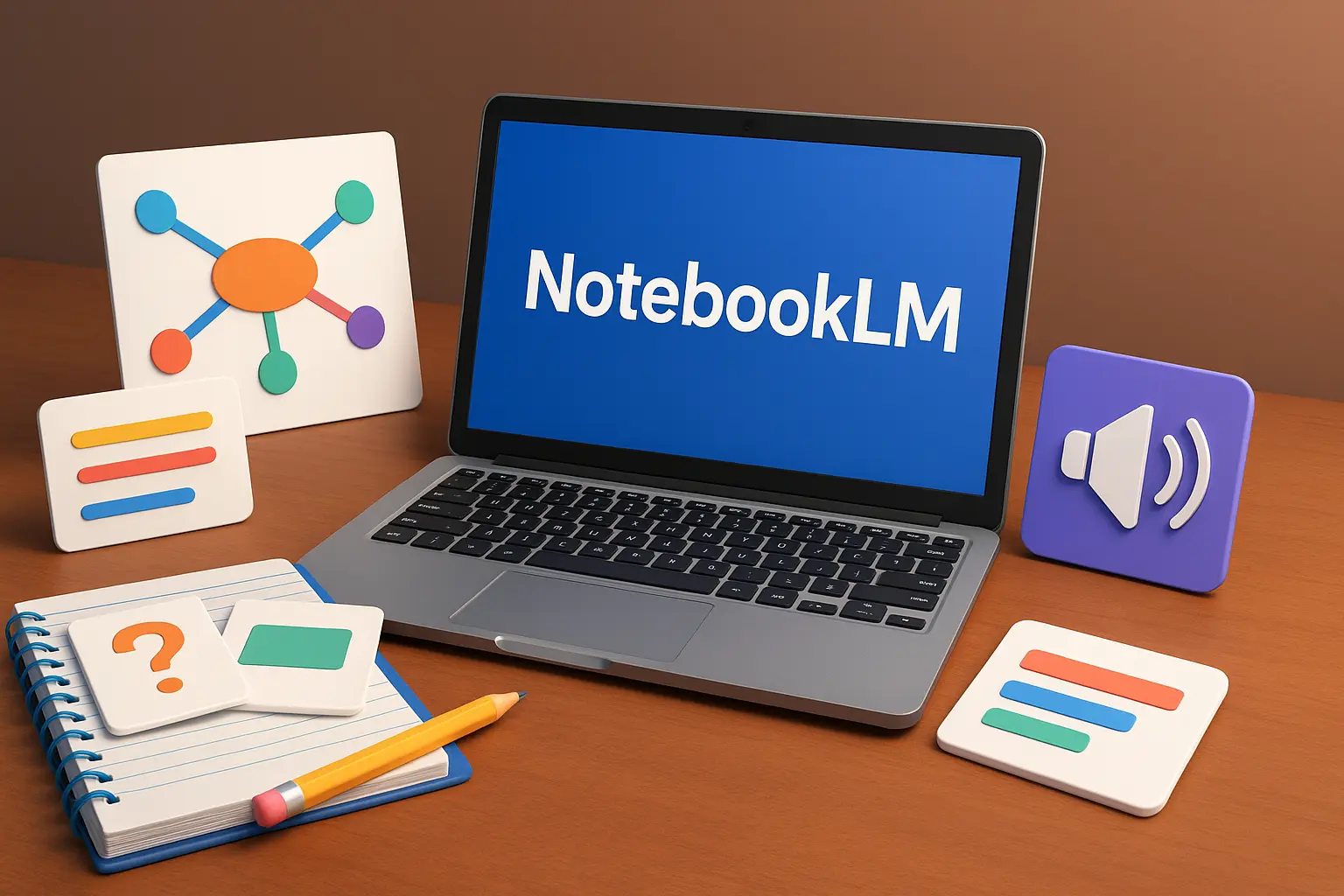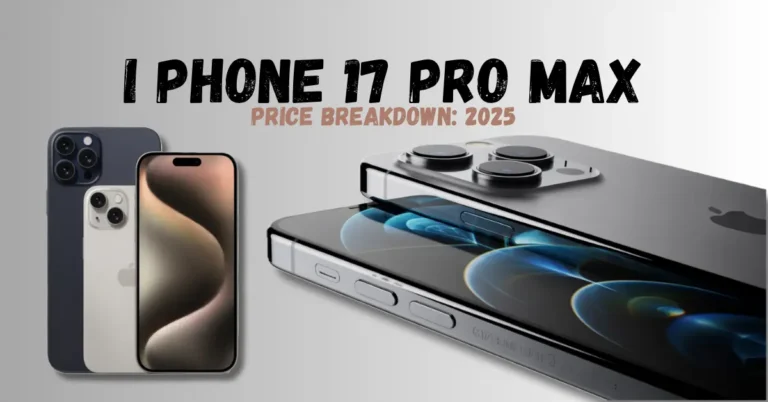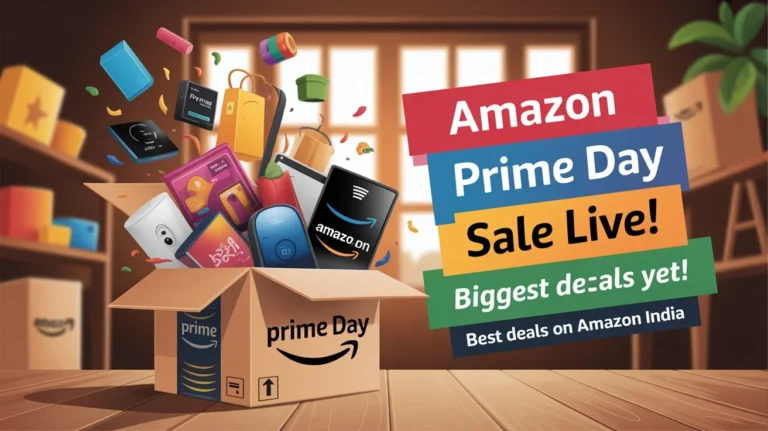Introduction: Drowning in Notes? NotebookLM Throws You a Lifeline
Picture this: It’s 2 AM. You’re surrounded by 37 open browser tabs, a mountain of PDFs, and half-finished Google Docs for your term paper. Sound familiar? For students today, information overload isn’t just exhausting—it’s a barrier to deep learning.
Enter NotebookLM, Google’s groundbreaking AI-powered research assistant. Unlike generic chatbots, NotebookLM grounds itself in your own documents, transforming how you absorb, connect, and create knowledge. If you’ve ever wished for a personal research librarian who knows exactly what you’re studying, NotebookLM is your answer.
Table of Contents
What Makes NotebookLM Different? (Hint: It’s All About Your Sources)
NotebookLM (formerly “Project Tailwind”) isn’t another ChatGPT clone. Its superpower is source-grounded AI. Upload your lecture notes, research papers, textbook chapters, or even interview transcripts, and NotebookLM analyzes those specific documents to answer questions, summarize concepts, and spark ideas.
Why This Matters for Students:
- No More “Generic” AI Hallucinations: Because NotebookLM bases responses solely on your materials, answers are relevant and factually anchored.
- Context is King: Ask about “Freud’s dream theory in Lecture 4 PDF” or “the catalyst reaction from Lab Report 3,” and it understands.
- Connect the Dots: Struggling to link themes across 15 sources? NotebookLM finds hidden relationships in seconds.
💡 Pro Tip: NotebookLM supports PDFs, Google Docs, copied text, and even copied Google Slides. Perfect for consolidating scattered course materials.
NotebookLM vs. Other Tools: Why Students Win
Let’s compare NotebookLM to common alternatives:
| Feature | NotebookLM | Generic AI (ChatGPT/Gemini) | Traditional Notes (OneNote/Notion) |
|---|---|---|---|
| Analyzes YOUR Sources | ✅ Deep understanding of your uploads | ❌ Relies on general web knowledge | ❌ Manual effort only |
| Summarization | ✅ Tailored to your docs | ✅ But lacks context | ⚠️ Manual highlighting/outlining |
| Q&A Accuracy | ✅ Source-specific answers | ⚠️ Risk of generic/inaccurate replies | ❌ Not applicable |
| Idea Generation | ✅ Based on your content | ✅ But ungrounded | ❌ Limited |
| Cost | ✅ Free (as of 2025) | ⚠️ Freemium models common | ⚠️ Often freemium/paid |
The Verdict: NotebookLM excels when precision and personal context matter—like writing a thesis or prepping for finals.
5 Game-Changing Ways Students Can Use NotebookLM
1. Slash Research Time by 70%
Upload 10 journal articles for your literature review. Ask:
“Compare methodologies in Sources 3, 7, and 9 regarding renewable energy efficiency.”
NotebookLM generates a table contrasting approaches, saving hours of rereading.
2. Turn Lectures into Study Guides
Drop your biology lecture notes and textbook chapter. Prompt:
“Create a bullet-point summary focusing on cell mitosis stages, with simple analogies.”
Boom—custom study notes in 10 seconds.
3. Defeat Writer’s Block
Stuck on your essay intro? Upload your outline and sources. Ask:
*”Suggest 3 thesis statements combining the themes from my first-year econ paper and the latest GDP report I uploaded.”*
4. Prep for Exams with AI Quizzes
After uploading notes, prompt:
*”Generate 5 multiple-choice questions on cognitive psychology theories from Lecture Slides 8.”*
Self-testing made effortless.
5. Collaborative Projects Made Sane
Group working on a presentation? Share a notebook with everyone’s research. Ask:
“Identify conflicting viewpoints about blockchain in our uploaded docs and suggest compromises.”
Real Student Success Stories
- Sophia (History Major): “I used NotebookLM to analyze 20 primary sources for my thesis. It found connections between letters I’d missed, cutting my research phase from 3 weeks to 5 days.”
- Rohan (Engineering Student): “Uploaded 50 pages of lab manuals. Asked it to ‘explain PCR troubleshooting steps like I’m 12.’ Lifesaver before exams!”
- Emma (Graduate Researcher): “It turned my messy interview transcripts into thematic summaries. What took months now takes days.”
Limitations? Let’s Be Real
NotebookLM isn’t magic:
- Source Limits: ~50 sources/notebook (as of 2025). Prioritize key materials.
- Format Constraints: Best with text-heavy PDFs/Docs (not images or complex tables).
- Still Experimental: Occasional hiccups; always verify critical facts.
- U.S.-Only Access: Requires a U.S. Google account (VPN workarounds exist).
✅ Workaround: Extract text from slide decks or books using OCR tools first.
Getting Started: Your 10-Minute NotebookLM Setup
- Go to NotebookLM’s official site.
- Sign in with Google (U.S. account recommended).
- Click “New Notebook” and name it (e.g., “Psychology 101 Final Paper”).
- Upload Sources: Drag & drop PDFs, Docs, or paste text.
- Start Asking: Use the chatbox like a study partner!
🚀 Pro Tip: Start small. Upload one lecture, then ask: “Summarize key arguments and list 3 debate questions.”
FAQ: Quick Answers to Student Queries
Q: Is NotebookLM free?
A: Yes! Google hasn’t announced pricing yet.
Q: Can it write my essay?
A: It helps brainstorm, structure, and research—but doesn’t replace your critical thinking. Use it ethically.
Q: Does it work on mobile?
A: Web-only for now, but mobile-friendly.
Q: Is my data safe?
A: Google states docs aren’t used to train public AI models. Review their privacy policy.
Q: Can I share notebooks?
A: Yes! Great for group projects.
The Future of Learning is Personalized
NotebookLM isn’t just another app—it’s a paradigm shift. Students no longer need to wrestle alone with information chaos. By anchoring AI to your unique materials, NotebookLM turns passive consumption into active dialogue. It’s like having a tutor who’s read every book, note, and article you care about.
Ready to Transform Your Study Sessions?
Stop drowning in tabs and fragmented notes. Try NotebookLM today:
👉 Launch NotebookLM
Cloud Computing Basics: Your Essential Guide to Getting Started (2024)
Have you tested NotebookLM? Share your wins (or questions!) in the comments below!




